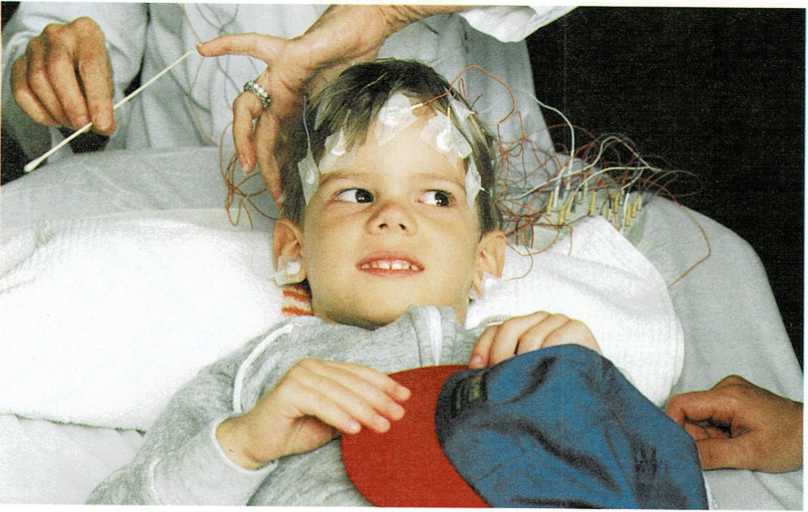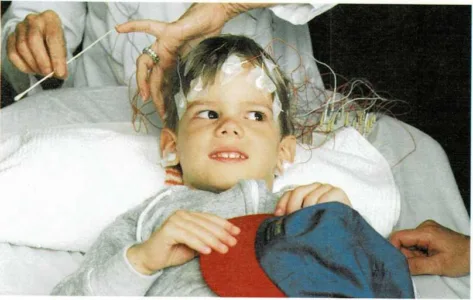Electroencephalography – Encephalitis
Electroencephalography (EEG) is a recording and study of brain
waves. The most common reason for administering an EEG is to evaluate a
child who has had a seizure. An instrument called the
electroencephalograph records electrical impulses sent out by the eortex
(the thin layer of nerve cells that covers most of the brain). The
electrical impulses are picked up by wires

An electroencephalograph records brain waves. Wires attached to the
child’s head pick up electrical impulses from the brain.
attached to the scalp, either with glue or with needles, and recorded on
a strip of paper. The record (the electroencephalogi\’am, or EEG) looks
like a series of wavy lines with varying patterns. The child’s hair does
not have to be shaved off, and the child feels no pain from the
electroencephalograph.
Abnormal patterns may be recorded if the child has epilepsy, a seizure,
a brain tumor, encephalitis, drug intoxication, or a dangerous disease
of the brain. In some cases, especially in epilepsy, doctors can
determine the cause of the abnormal electrical pattern from the
electroencephalogram. If a child’s EEG confirms the diagnosis of
epilepsy, medications to control the seizures can be prescribed. In
other cases the abnormal pattern indicates only that brain destruction
or deterioration has occurred, and the electroencephalogram cannot be
used to establish a definite cause of the destruction or deterioration.
[a.g.s.]
Emetics are medicines that cause vomiting. Inducing vomiting is a
recommended treatment for certain types of poisoning. Do
not induce vomiting until you have called the Poison Control Center,
your doctor, or an emergency room. Never induce vomiting if the child is
asleep, unconscious, semiconscious, or has convulsions; or if the child
has swallowed a corrosive substance or a petroleum product.
Vomiting is more effective if the child first drinks some liquid. The
best emetic is syrup (not fluid extract) of ipecac. If you do not have
syrup of ipecac, put one teaspoon of mustard in half a glass of water,
or three teaspoons of salt in a glass of warm water, and have the child
drink the mixture.
Any time you induce vomiting, be sure to keep the child’s head lower
than the hips so that all the vomit flows out of the mouth and not back
into the throat. Also, be sure to catch and save the vomit for the
doctor to analyze, [m.g.]
See also Poisonings and poisons
Encephalitis occurs when an inflammation of the brain alters normal
functioning of various parts of the brain. There are many different
signs and symptoms of encephalitis.
They include fever, headache, mental dullness, stiff neck, and
convulsions. Hallucinations and coma may also occur. Call your child’s
doctor if you suspect that your child has encephalitis.
Encephalitis is caused by several kinds of viruses. These viruses can be
transmitted by mosquitoes and other insects. Or, encephalitis may
accompany mumps, measles, or certain other infections. Preventive
measures include insect control and vaccinations, if available, against
the specific viruses that cause encephalitis.
Care of a child with encephalitis is extremely difficult, especially
when the child is in a period of sleep. Almost all children with
encephalitis need to be hospitalized for an extended period of time.
Recovery may be slow. Supportive and rehabilitative efforts and
treatments are very important for the recovering patient.
Prognosis is varied and guarded. A few children do not survive
encephalitis. Some who survive may have long-term motor, visual, or
intellectual impairment, [h dr . jr.]

